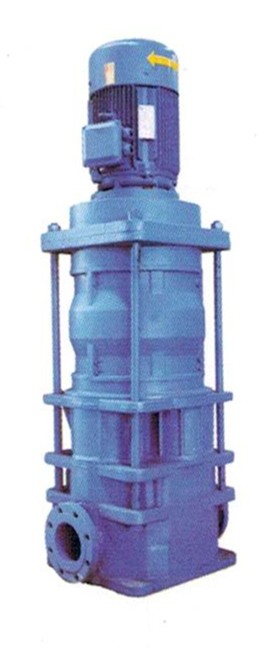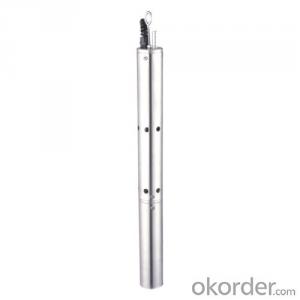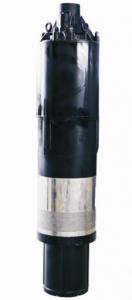Amazon Solar Pump - L3D-40-180 Solar Water Pump
- Loading Port:
- China Main Port
- Payment Terms:
- TT OR LC
- Min Order Qty:
- -
- Supply Capability:
- 300 sets unit/month
OKorder Service Pledge
OKorder Financial Service
You Might Also Like
Product description:
Product: Solar water pump
Model:L3D-40-180
Appilication:
surface pump
for surface water of pond, river, lake
for irrigation of a big farm with 30000 m2 on the top of a mountain
Product specification:
flow rate:40m3/ hour, 280m3/day.
lift: 10m-180m
pump diameter: 610mm
Pump installed on the ground, outlet to the water surface:4m
with AC motor, motor power:22kW
but only need solar power:24kW(while Grundfos pump needs at least 45kW solar power, our pump can save more than 50% solar panel power,save USD15000 cost for solar panel per set.
Material:
Pump inside: stainless steel and wearable nylon,it enables our solar pump to have 10 years sevice life.
Motor : AC motor, 380V , three phase , 50Hz. The pump also can connect with grid power directly.
Certification:
3 International patent
ISO9001
CE
Warranty:2 years
- Q: How does the elevation affect the performance of a solar pump?
- The elevation affects the performance of a solar pump by impacting the water pressure and flow rate. As the elevation increases, the atmospheric pressure decreases, causing a decrease in the available water pressure. This reduction in pressure can result in a decrease in the pump's performance, as it may struggle to generate sufficient power to overcome the higher elevation and maintain the desired flow rate. Therefore, the higher the elevation, the more challenging it becomes for a solar pump to operate effectively.
- Q: How does a solar pump help in reducing the use of chemical fertilizers?
- A solar pump helps in reducing the use of chemical fertilizers by providing a sustainable and renewable source of energy for irrigation. By using solar power, farmers can irrigate their crops without relying on conventional pumps that are usually powered by fossil fuels. This not only reduces the carbon footprint but also eliminates the need for transporting and storing chemical fertilizers, as the solar pump ensures a consistent water supply for the crops. Consequently, the reliance on chemical fertilizers is decreased, promoting more environmentally friendly and organic farming practices.
- Q: Are there any maintenance requirements for solar pumps?
- Yes, there are maintenance requirements for solar pumps. While solar pumps are generally low maintenance compared to traditional pumps, regular maintenance is still necessary to ensure their optimal performance and longevity. Some of the maintenance requirements for solar pumps include: 1. Cleaning: Regularly clean the solar panels to remove any dust, dirt, or debris that may accumulate on the surface. This will help maximize the solar panels' efficiency and ensure they generate enough power to operate the pump. 2. Inspections: Periodically inspect the pump system, including the motor, pump, and connections, to check for any signs of damage or wear. Look for loose or damaged wires, leaks, or any other issues that may affect the pump's performance. 3. Lubrication: Depending on the type of solar pump, lubrication may be required for the moving parts. Follow the manufacturer's guidelines and recommendations for lubricating the pump to ensure smooth operation. 4. Battery maintenance: If the solar pump includes a battery backup system, regular battery maintenance is essential. This may involve checking the battery levels, cleaning the battery terminals, and replacing batteries if necessary. 5. Professional servicing: It is advisable to have a professional service and inspect the solar pump system at least once a year to ensure everything is in good working order. They can perform more in-depth checks, provide any necessary repairs or replacements, and offer recommendations for optimal performance. By following these maintenance requirements, solar pump owners can ensure their systems operate efficiently and effectively, reducing the risk of breakdowns and extending the lifespan of the pump.
- Q: How does the tilt angle of the solar panel affect the performance of a solar pump?
- The tilt angle of a solar panel affects the performance of a solar pump by directly impacting the amount of sunlight it receives. A properly tilted solar panel can maximize the absorption of sunlight, leading to increased energy production and improved pump performance. On the other hand, an incorrect tilt angle can reduce the efficiency of the solar panel, resulting in lower energy output and decreased pump performance.
- Q: Solar water heater booster pump how to use automatic valve
- Choose to use manual switch to force the booster pump can also start, just remember to turn off the pump after the full.
- Q: Can a solar pump be used for water supply in hotels and resorts?
- Yes, a solar pump can certainly be used for water supply in hotels and resorts. Solar pumps are a sustainable and cost-effective solution that can provide a reliable and continuous water supply for various applications, including hotels and resorts. They can effectively pump water from wells, boreholes, or other water sources, making them an ideal choice for these establishments aiming to reduce their carbon footprint and energy costs.
- Q: What is the lifespan of the solar panels used in a solar pump?
- The lifespan of solar panels used in a solar pump can vary but typically ranges from 25 to 30 years.
- Q: Can a solar pump be used in areas with frequent power outages?
- Yes, a solar pump can be used in areas with frequent power outages. Since solar pumps are powered by solar energy, they do not rely on the electrical grid for operation. This makes them a reliable and sustainable solution for areas where power outages are common.
- Q: Are there any regulations on the disposal of solar pump components?
- Yes, there are regulations on the disposal of solar pump components. The disposal of these components must adhere to environmental regulations and guidelines set by local, state, and national authorities. It is important to properly dispose of these components to minimize environmental impact and ensure the safe handling of potentially hazardous materials.
- Q: Can a solar pump be used for water supply in a school or hospital?
- Yes, a solar pump can be used for water supply in a school or hospital. Solar pumps are an efficient and sustainable solution for water supply as they utilize solar energy to power the pump, eliminating the need for electricity or fuel. They can provide a reliable and continuous water supply, making them ideal for institutions like schools and hospitals that require a consistent source of water. Additionally, solar pumps are environmentally friendly and cost-effective in the long run, making them a viable option for water supply in such settings.
Send your message to us
Amazon Solar Pump - L3D-40-180 Solar Water Pump
- Loading Port:
- China Main Port
- Payment Terms:
- TT OR LC
- Min Order Qty:
- -
- Supply Capability:
- 300 sets unit/month
OKorder Service Pledge
OKorder Financial Service
Similar products
Hot products
Hot Searches
Related keywords


















